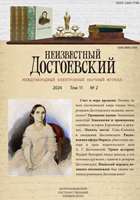Достоевский на «простом языке»: проблемы современного художественного перевода
Dostoevsky in the Plain Language: The Problems of Modern Literary Translation
Author(s): Valentina Vasilievna Borisova, Iskra V. KosmarskaiaSubject(s): Russian Literature, Translation Studies, Theory of Literature, Sociology of Literature
Published by: Петрозаводский государственный университет
Keywords: plain language; New Testament; Japanese Dostoevsky; Ikuo Kameyama; Brothers Karamazov; translation; interpretation;
Summary/Abstract: The article is devoted to the functional analysis of one of the modern adaptive models of the national literary language — the plain language. This concept is actively discussed and implemented in modern translation practice today, including in numerous literary translations of the works of Dostoevsky, the most widely read Russian writer in the world. From a historical and typological point of view, the new translation strategy correlates with the principles of the Russian translation of the first book from Dostoevsky’s reading circle — “One Hundred and Four Sacred Stories of the Old and New Testaments,” as well as the New Testament published in 1823, which includes the writer’s hard labor Gospel that became a key precedent text in his post-reformation work. The article analyzes the work performed in the early 2000s. Japanese scientist Ikuo Kameyama translated the novel “The Brothers Karamazov,” which was a representative experience of modern artistic interpretation and adaptation of Dostoevsky’s work. Thanks to the translator’s orientation to the plain language, the novel of the Russian writer found its foreignspeaking readers and became an understandable and familiar text for them.
Journal: Неизвестный Достоевский
- Issue Year: 11/2024
- Issue No: 2
- Page Range: 196-215
- Page Count: 20
- Language: Russian

